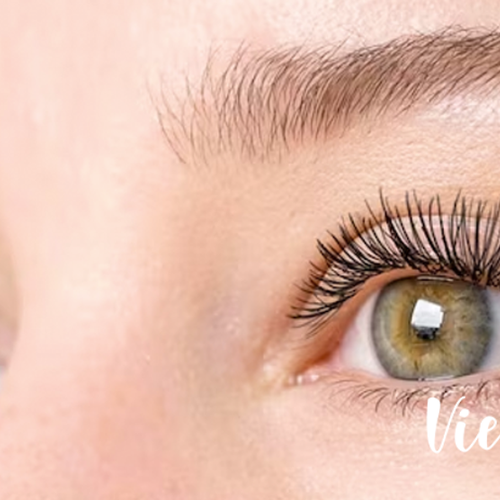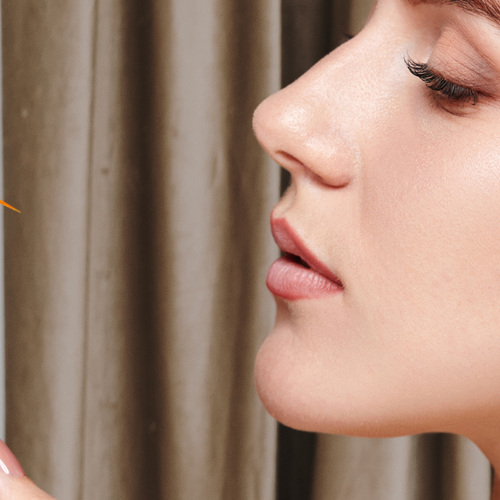Have you ever wondered why your once pearly white smile has started to dull? The answer might be lurking in your diet. From that morning cup of coffee to the glass of red wine at dinner, what you consume can have a significant impact on the color of your teeth. Understanding the relationship between your diet and tooth color is the first step in maintaining a brighter, healthier smile.
Teeth staining is a common issue that affects many people, often leading to a decrease in confidence and a reluctance to smile. Certain foods and drinks are notorious for their ability to discolor teeth, but the good news is that with a bit of knowledge and some mindful choices, you can enjoy your favorite treats without sacrificing your smile.
In this blog, we’ll delve into how teeth staining occurs and identify the top culprits in your diet. We'll also explore foods and drinks that can help mitigate staining and share practical tips to keep your teeth looking their best. Whether you're aiming to maintain your current shade or reverse some discoloration, this guide will provide you with valuable insights and strategies.
How Teeth Staining Occurs
Teeth staining can be a complex process influenced by various factors. To understand it better, let's look at the basic structure of a tooth:
Enamel: The outermost layer of the tooth, which is hard and protects the inner layers.
Dentin: The layer beneath the enamel, which is naturally yellowish and darker.
When we talk about teeth staining, we refer to two types:
Extrinsic Stains: These occur on the surface of the enamel and are often caused by food, drink, and tobacco. They can usually be removed by brushing or professional cleaning.
Intrinsic Stains: These stains are deeper, occurring in the dentin. They can be caused by aging, trauma, or certain medications and are typically harder to remove.

Factors That Contribute to Staining
While diet is a significant factor in teeth staining, it’s not the only one. Here’s a quick overview of other contributors:
Age: As we age, the enamel wears down, making the underlying dentin more visible and leading to a darker appearance.
Oral Hygiene: Poor oral hygiene can allow stains to accumulate and plaque to build up, exacerbating discoloration.
Genetics: The thickness and smoothness of your enamel can be inherited, affecting how easily your teeth stain.
Top Foods and Drinks That Stain Teeth
Coffee and Tea
Coffee and tea are beloved morning rituals for many, but they come with a cost to your teeth.
-Coffee: Rich in tannins, coffee's dark color and acidic nature make it a prime suspect for staining teeth. Regular consumption can lead to significant discoloration over time.
-Tea: While often considered a healthier alternative, tea, particularly black tea, contains more tannins than coffee, potentially leading to even more staining. Green and herbal teas are less likely to stain but can still contribute to discoloration if consumed frequently.

Red Wine
Red wine is notorious for staining teeth due to its deep color and acidic nature.
-Acidity and Pigments: The combination of acids that erode enamel and dark pigments that stick to teeth makes red wine a formidable stain-maker.
-White Wine: Although it lacks the dark pigments, white wine is still acidic and can erode enamel, making teeth more susceptible to staining from other foods.
Soda and Soft Drinks
Soda and soft drinks are a double whammy for your teeth, combining acid and dark coloring.
-Dark Sodas: These contain not only staining pigments but also acids that can erode enamel, making teeth more prone to discoloration.
-Clear Sodas: Even though they lack the dark pigments, clear sodas are still acidic and can contribute to enamel erosion, facilitating staining from other sources.
Berries and Juices
Berries are packed with nutrients, but their intense color can also stain teeth.
-Blueberries, Blackberries, and Pomegranates: These deeply colored fruits can leave a noticeable stain on teeth. Their juices are even more concentrated and can exacerbate the staining effect.
-Berry Juices: Consuming these juices regularly can lead to significant discoloration due to their high pigment content.

Tomato-Based Sauces
Tomato-based sauces are a staple in many diets, but their color and acidity are problematic for teeth.
-Pasta Sauces and Ketchup: These are typically rich in both dark pigments and acids. They can cling to teeth and cause staining over time.
Curry and Spices
Curries: Many curry dishes also contain tomatoes and other spices that can contribute to staining.
Brightly colored spices, particularly those in curry, can lead to yellowing of teeth.
-Turmeric: This spice, while celebrated for its health benefits, is notorious for its staining ability due to its vibrant yellow color.
-Other Spices: Spices like saffron and paprika can also contribute to teeth discoloration.
Balsamic Vinegar
Balsamic vinegar is loved for its rich flavor but can be a hidden culprit in teeth staining.
-Dark Color and Stickiness: Its dark hue and sticky nature mean it can adhere to teeth and cause stains. This is especially true if it’s not rinsed off promptly after consumption.
Other Culprits
While the above foods and drinks are major players, other items can also stain teeth.
-Soy Sauce: This dark, savory sauce can leave a noticeable stain if consumed frequently.
-Beetroot: Known for its deep purple color, beetroot can easily stain both teeth and clothing.
-Certain Candies: Brightly colored candies, particularly those with artificial dyes, can also contribute to teeth staining.
Foods and Drinks That Help Minimize Staining
Water
Water is the simplest and most effective way to combat teeth staining.
-Post-Meal Rinse: Drinking water after consuming staining foods or drinks helps wash away particles and acids that can cling to your teeth.
-Staying Hydrated: Keeping hydrated also helps maintain saliva production, which naturally cleanses the mouth.

Dairy Products
Dairy products like cheese, milk, and yogurt can help protect your teeth.
-Neutralizing Acids: The calcium and phosphates in dairy products help neutralize acids in the mouth and fortify enamel.
-Cheese: Eating cheese can also increase saliva production, which helps rinse away food particles and reduce staining.
Crunchy Fruits and Vegetables
Fruits and vegetables like apples, celery, and carrots act as natural teeth scrubbers.
-Scrubbing Effect: Their crunchy texture can help remove food particles and surface stains from teeth.
-Promoting Saliva Production: They also stimulate saliva production, which is beneficial for cleaning the mouth.
Leafy Greens
Leafy greens like spinach and kale can provide a protective barrier for your teeth.
-Protective Film: These vegetables contain compounds that help create a protective film on teeth, which can prevent stains from adhering to the enamel.
-Nutrient-Rich: They also offer a wealth of nutrients that support overall oral health.
Tips to Mitigate Teeth Staining from Food and Drink
Use a Straw
Using a straw can help minimize contact between staining beverages and your teeth.
-Reduced Contact: By using a straw, you can direct the beverage past your teeth, reducing the potential for stains.
-Best for Cold Drinks: This method is especially effective for cold drinks like iced coffee, tea, and soda.
Rinse or Brush After Eating
Rinsing your mouth with water or brushing your teeth after eating can help reduce staining.
-Immediate Action: Rinsing or brushing immediately after consuming staining foods and drinks can help remove particles and acids before they have a chance to discolor your teeth.
-Avoid Over-Brushing: Be mindful not to brush too aggressively or too soon after consuming acidic foods, as this can damage enamel.

Chewing Sugar-Free Gum
Chewing sugar-free gum can stimulate saliva production and help cleanse your mouth.
-Saliva Stimulation: Saliva naturally cleanses the mouth and helps neutralize acids, reducing the potential for stains.
-Choosing the Right Gum: Opt for sugar-free varieties to avoid contributing to tooth decay.
Regular Dental Hygiene
Maintaining a robust dental hygiene routine is crucial for preventing stains.
Brushing and Flossing: Brush at least twice a day and floss daily to remove plaque and food particles that can lead to staining.
Choosing the Right Toothpaste: Consider using toothpaste specifically formulated for whitening to help reduce surface stains.
Professional Cleanings
Regular visits to the dentist for professional cleanings can help keep your teeth looking their best.
Deep Cleaning: Professional cleanings can remove plaque and tartar buildup that brushing and flossing miss.
Consult Your Dentist: Your dentist can also offer personalized advice and treatments for reducing and removing stains.
By understanding how different foods and beverages impact your teeth, you can make informed choices that allow you to enjoy your favorites while minimizing the risk of staining.
Remember, it’s not just about avoiding certain items but also about incorporating habits and foods that help protect and clean your teeth. Whether it's sipping your favorite drink through a straw, munching on crunchy veggies, or simply rinsing your mouth with water, small adjustments can make a big difference in maintaining a radiant smile.

Ultimately, maintaining a bright, healthy smile is about balance. Enjoying life’s pleasures, like that comforting cup of coffee or a glass of wine with friends, is important. With mindful practices and a little extra care, you can savor these moments without worrying about the long-term impact on your teeth.
Stay conscious of your choices, maintain regular dental hygiene, and don’t hesitate to seek professional advice if needed. Your smile is one of your most valuable assets, and with the right approach, you can keep it shining brightly for years to come.
Recommended Product:
VieBeauti Deluxe Teeth Whitening Kit with 32X LED Light and Whitening Gel Pen













0 comments